Paying attention to the corners and edges of a photograph can relieve distracting visual tension. Visual tension can be good or bad. The tension I’m referring to is the nagging and irresistible pull on your eyeball away from the subject to undesirable and distracting features. Not invariably, but often, these reside in the corners and edges. This response is hardwired and not learned, so we all experience it.
Here are some on-location tricks I use to mitigate visual tension:
- I use a tripod. It slows me down and allows me to really look, from corner to corner.
- I use a Hoodman loupe to carefully inspect the scene on the camera’s LCD screen.
- If I see a distraction, I consider moving the object (for instance, trash or a dead branch) or moving my tripod.
- If using a zoom lens, I consider framing it differently.
Plan B
At times, I either didn’t notice the distraction or couldn’t avoid it. This is where I implement plan B in post-processing:
- Consider deleting the image.
- Maybe crop the image to eliminate the distraction.
- Try to mitigate it with either a bright or a dark vignette.
- Alternatively, I may try the healing or cloning brush in Lightroom or use the spot healing content-aware tool in Photoshop to eliminate it.
- I remind myself that the world and my photographs can’t and shouldn’t be perfect and consider which distractions stay or go.
- These actions are done non-destructively and I always have the original RAW file if I’ve gone too far.
- Finally, I revisit the original and processed images at a later time to make sure it was the photograph and not me that was the problem.
.mgl-tiles { display: none; } #mgl-gallery-634ecbf204e3d { margin: -5px; width: calc(100% + 10px); } #mgl-gallery-634ecbf204e3d .mgl-box { padding: 5px; } @media screen and (max-width: 768px) { #mgl-gallery-634ecbf204e3d { margin: -5px; width: calc(100% + 10px); } #mgl-gallery-634ecbf204e3d .mgl-box { padding: 5px; } } @media screen and (max-width: 460px) { #mgl-gallery-634ecbf204e3d { margin: -5px; width: calc(100% + 10px); } #mgl-gallery-634ecbf204e3d .mgl-box { padding: 5px; } }
Chinstrap penguin pair in a snowstorm — Antarctica Peninsula. The rock in the lower right corner is too small a feature, too close to the flipper and distracting. It creates bad visual tension.
The rock in the lower left corner has been removed using a cloning tool in Photoshop. Time investment was less than two minutes.

Not everything in the periphery is detrimental and some features can be compositional assets. The image below includes branches from unseen trees. They help frame the image and put the viewer into the scene. These branches are not dominant and do not draw unwanted attention. The leaves towards the bottom right are only partially seen and have no compositional or contextual purpose and distract.
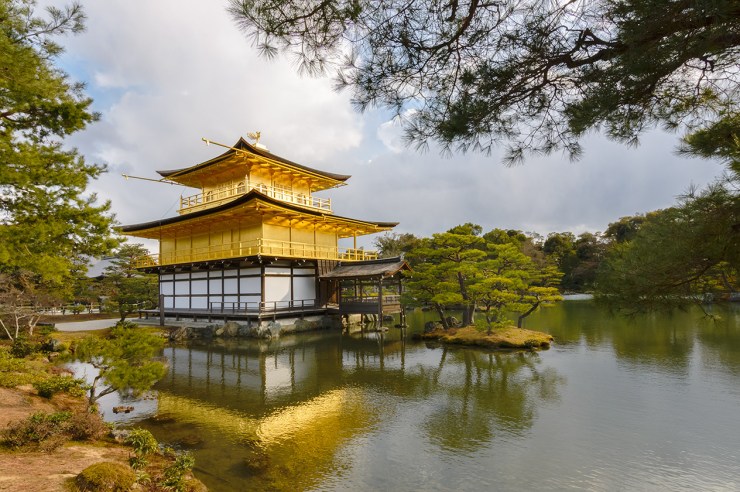
I could have cropped the leaves out but chose instead to use the Content-Aware Spot Healing Brush tool in Photoshop. The total time invested is less than 15 seconds.
.mgl-tiles { display: none; } #mgl-gallery-634ecbf2058b6 { margin: -5px; width: calc(100% + 10px); } #mgl-gallery-634ecbf2058b6 .mgl-box { padding: 5px; } @media screen and (max-width: 768px) { #mgl-gallery-634ecbf2058b6 { margin: -5px; width: calc(100% + 10px); } #mgl-gallery-634ecbf2058b6 .mgl-box { padding: 5px; } } @media screen and (max-width: 460px) { #mgl-gallery-634ecbf2058b6 { margin: -5px; width: calc(100% + 10px); } #mgl-gallery-634ecbf2058b6 .mgl-box { padding: 5px; } }
Arctic Tern — Svalbard, Norway. The bird and the wing wash were the subjects, not the strip of sand at the bottom or the rock at the lower right.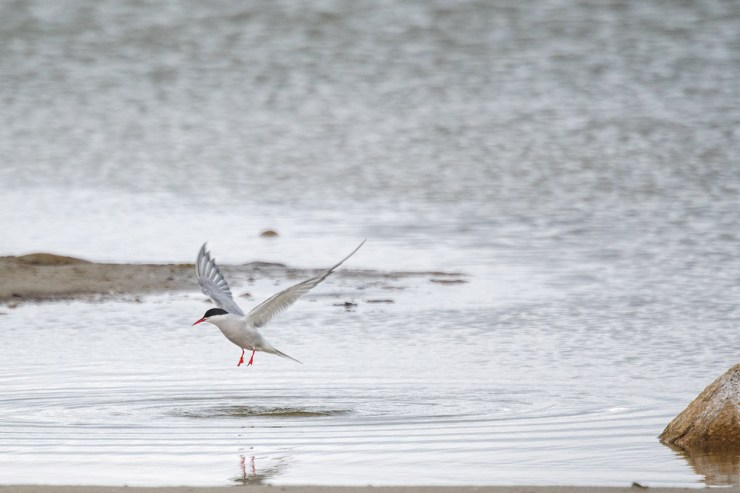
I used a positive edge vignette to calm the edges and frame the subject to better advantage.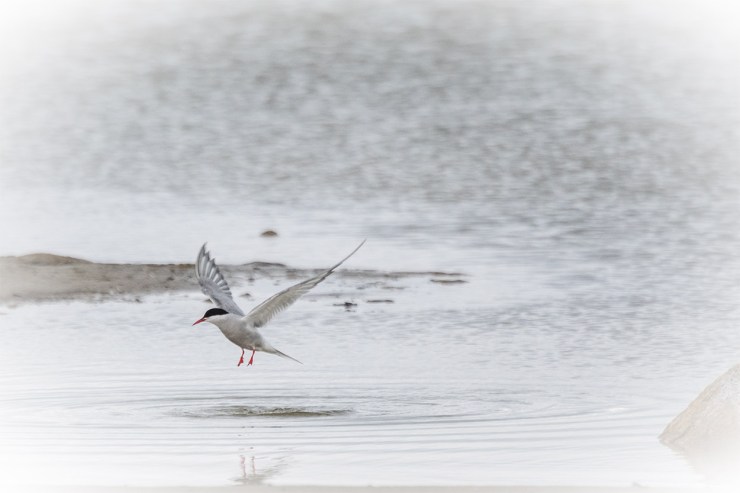
.mgl-tiles { display: none; } #mgl-gallery-634ecbf205f5c { margin: -5px; width: calc(100% + 10px); } #mgl-gallery-634ecbf205f5c .mgl-box { padding: 5px; } @media screen and (max-width: 768px) { #mgl-gallery-634ecbf205f5c { margin: -5px; width: calc(100% + 10px); } #mgl-gallery-634ecbf205f5c .mgl-box { padding: 5px; } } @media screen and (max-width: 460px) { #mgl-gallery-634ecbf205f5c { margin: -5px; width: calc(100% + 10px); } #mgl-gallery-634ecbf205f5c .mgl-box { padding: 5px; } }
Bull sharks and pilot fish — Fiji (with one unwanted stripped snapper and other edge/corner distractions)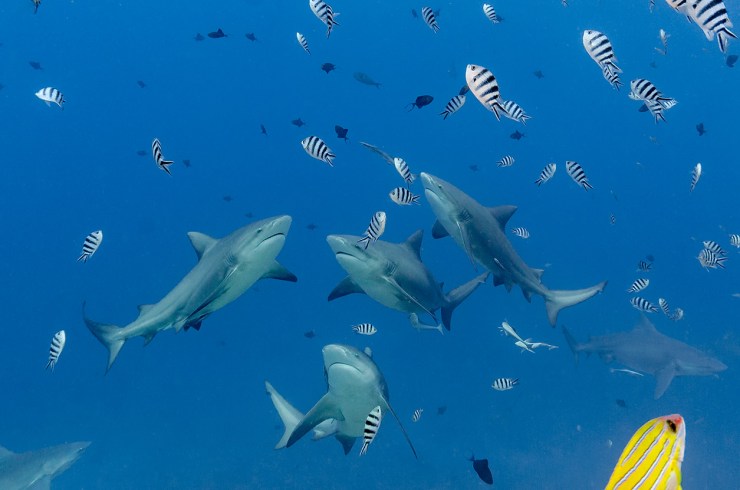
With a combination of cloning and content aware spot-healing in Photoshop, the image is still lively and eyes are directed to the action. Partially visualized sharks and fish have been eliminated from the corners.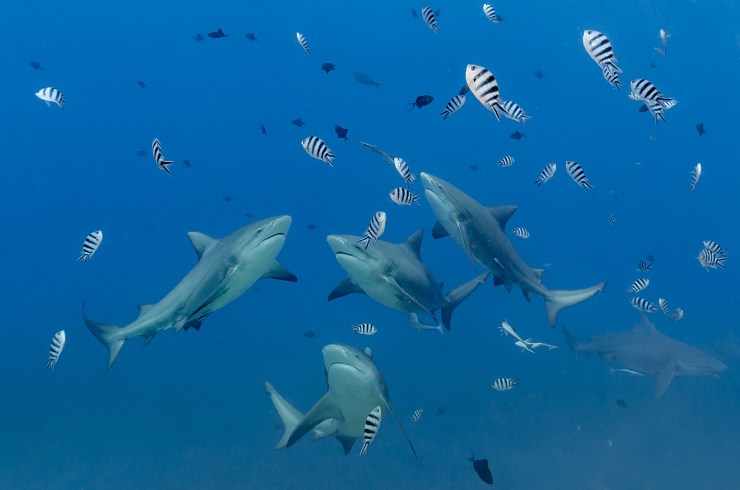
To summarize, check your edges carefully. In general, peripheral elements should be either fully in (included with intent) or possibly, completely eliminated, if they pull the eye away from the main subject or action. Knowing a few Lightroom or Photoshop techniques come in handy to eliminate unwanted distractions when they are unavoidable.
Tell your story with the second annual Visual Storytelling Conference!
Experience four days of interactive, online training sessions featuring a range of educational content with experienced photographers and content creators. This free event kicks off with a series of technical boot camps to build essential skills, followed by live, online sessions on photography, video, business and social media. Join live from March 10-13, 2022!
